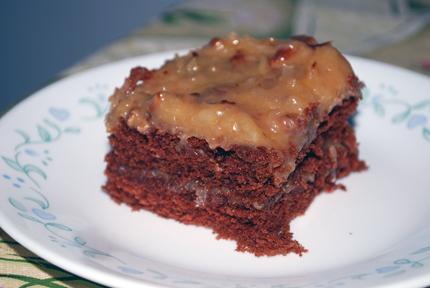It’s bedtime in the garden
This sounds a little racy, but it’s time to talk about beds. Not
the kind with an electric blanket and fluffy pillows, however.
For people who dig in the garden, this means garden beds for
spring planting.
It’s bedtime in the garden
This sounds a little racy, but it’s time to talk about beds. Not the kind with an electric blanket and fluffy pillows, however.
For people who dig in the garden, this means garden beds for spring planting.
Still the questions remain: What exactly is a bed, and more important, why should we care?
A garden bed is the difference between a real gardener who creates fluffy, friable soil and a person who just sticks a plant in the ground and hopes for the best.
Specifically, a garden bed, separated from another, distinguishes where you plant from where you walk. A raised bed could have actual sides made of wood, brick or anything that is six inches high or, for garden accessibility, high enough to accomodate a wheelchair or walker.
It’s just not the outline that makes a bed but what goes into it. Some garden beds have no edge structure but are raised because the soil has been dug deeply, fluffed up, amended a couple of times a year with organic material, mulched during the winter months and not walked upon.
The two most important elements – amended with organic material and not walked upon.
For high-yield gardening, our soil needs to be enriched with compost or other organic materials, treated to organic fertilizers and dug deeply. Then, keep off this rich mixture. Footsteps mash down the soil, squeezing out the necessary oxygen needed for plant growth. Beds that are two feet wide are about right – you are able to reach the middle of the bed without putting a footprint in the soil.
So, what goes into garden beds? How about bedding plants?
A bedding plant usually means a flowering annual, or ornamental foliage annual, that is popped into the bed shortly before it comes into bloom to make a showy display. Bedding plants are a big draw at the nursery right now with faithfuls such as marigolds, petunias and cosmos in summer, and pansies, johnny jump-ups, stock and snapdragons in cool season.
Bedding plants bloom their heads off as long as possible, and then are quickly replaced by another bedding plant ready to take its place.
There is no limit to what can go into a bed. There are annual beds, tulip beds, bulb beds, herb beds, perennial beds, wildflower beds and, of course, vegetable beds. These beds can be separate, or the different plantings can be mixed together for a “mixed” bed.
Just be sure your bed is made right with rich compost. And then don’t step on it.
A Reader Wants to Know: I have some weeds with yellow flowers popping up in my front yard. I was going to pull them out, but I see all my neighbors have them, too, and aren’t doing anything about them, so maybe they are wildflowers Is this a weed or a wildflower? -Joe
Joan Says: Actually, it is both. You’re plants are a perennial weed called Oxalis. It grows from underground runners and is difficult to dig out. Most people view Oxalis as a wildflower that appears in late winter in moist conditions and dies out as soon as the weather turns warm. Enjoy the yellow flowers as a signal that spring is just ahead.








